MUNICIPAL BUDGET GENERAL EDUCATIONAL INSTITUTION
"NOVOSELOVSKAYA GENERAL SECONDARY SCHOOL"
RAZDOLNENSKY DISTRICT OF THE REPUBLIC OF CRIMEA
Prepared by:
primary school teacher
MBOU "Novoselovskaya school"
Nezboretskaya Olga Vasilievna
town Novoselovskoye - 2016
Representation of the ancient peoples about the Earth
Correct information about the Earth and its shape did not appear immediately, not at one time and not in one place. However, it is difficult to find out exactly where, when, among which people they were most correct. Very few reliable ancient documents and material monuments have been preserved about this.
The first prototypes of geographical maps are known to us in the form of images left by our ancestors on the walls of caves, incisions on stones and animal bones. Researchers find such sketches in different parts of the world.
The way ancient people imagined the Earth largely depended on the nature, topography and climate of the places where they lived. Therefore, the peoples of different parts of the planet saw the world around them in their own way, and these views differed significantly.
For the most part, all the ideas of the ancients about the Earth were based primarily on mythological ideas.
Ancient inhabitants of the ocean coast
According to legend, the ancient inhabitants of the ocean coast imagined the Earth as a plane lying on the backs of three whales.
ancient indians
According to legend, the ancient Indians imagined the Earth as a plane lying on the backs of elephants.
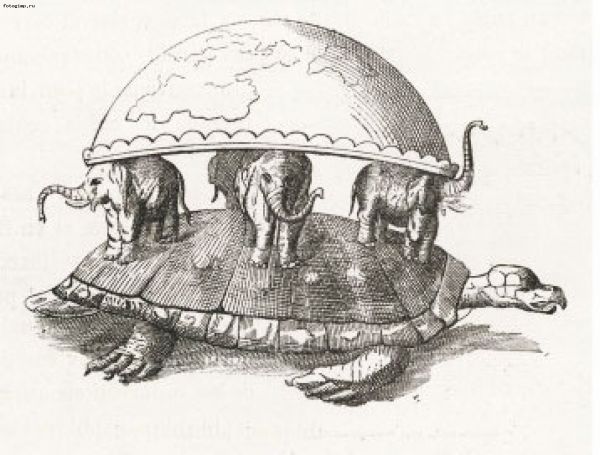
Probably the most famous legend today, which tells how ancient people imagined the Earth, was composed by the ancient Indians. This people believed that the Earth was actually a hemisphere, which rests on the backs of four elephants. These elephants stood on the back of a giant tortoise swimming in an endless sea of milk. All these creatures were wrapped in many rings by the black cobra Shesha, which had several thousand heads. These heads, according to the beliefs of the Indians, propped up the universe.
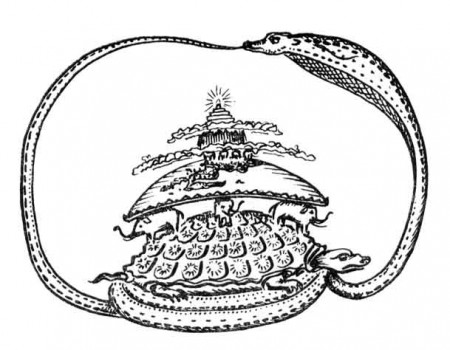
ancient babylonians
Valuable historical information about the Earth and its form was preserved by the ancient peoples who lived in the basin of the Tigris and Euphrates rivers, the Nile Delta and along the shores of the Mediterranean Sea (in Asia Minor and Southern Europe). Written documents from ancient Babylonia have survived to our time. They are about 6000 years old.

The Babylonians, in turn, inherited knowledge from even more ancient peoples. The Babylonians represented the Earth as a mountain, on the western slope of which Babylonia is located. They noticed that to the south of Babylon is the sea, and to the east there are mountains, through which they did not dare to cross. That's why it seemed to them. This mountain is round, and it is surrounded by the sea, and on the sea, like an overturned bowl, the firm sky rests - the heavenly world, like on Earth, is land, water and air. The heavenly land is the belt of the 12 constellations of the Zodiac. In each of the constellations, the Sun visits each year for about a month. The Sun, Moon and five planets move along this belt of land. Under the Earth is an abyss - hell, where the souls of the dead descend. At night, the Sun passes through this dungeon from the western edge of the Earth to the east, in order to begin its daytime journey through the sky again in the morning.
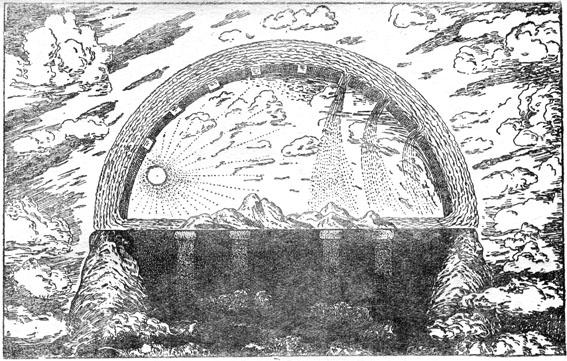
Ancient Greeks
The ancient Greeks imagined the Earth as a flat disk, surrounded by a sea inaccessible to man, from which stars emerge every evening and into which stars set every morning. From the eastern sea in a golden chariot, the sun god Helios rose every morning and made his way across the sky.
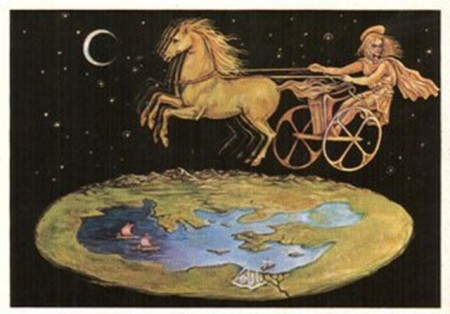
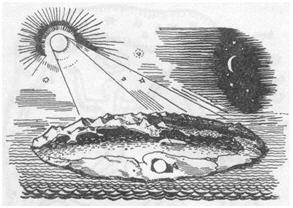
ancient egyptians
The world in the view of the ancient Egyptians: below - the Earth, above it - the goddess of the sky; left and right - the ship of the sun god, showing the path of the sun across the sky from sunrise to sunset
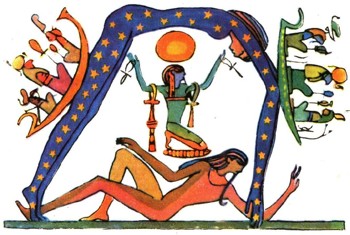
ancient jews
The ancient Jews imagined the Earth differently. They lived on a plain, and the Earth seemed to them a plain, on which mountains rise in some places. The Jews assigned a special place in the universe to the winds, which bring with them either rain or drought. The abode of the winds, in their opinion, was in the lower zone of the sky and separated the Earth from the heavenly waters: snow, rain and hail. There are waters under the Earth, from which channels go up, feeding the seas and rivers. Apparently, the ancient Jews had no idea about the shape of the entire Earth.
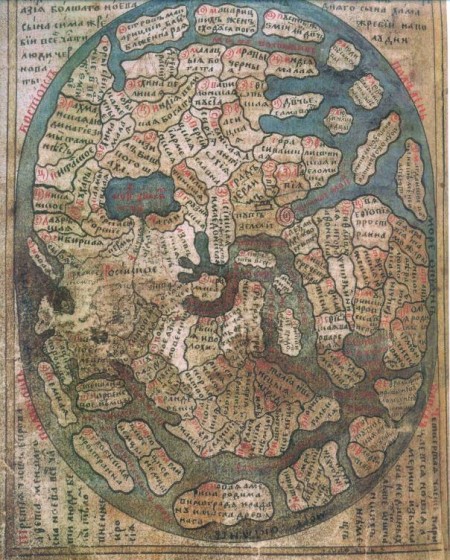
ancient muslims
Seven heavenly spheres according to Muslim ideas. The worldview that the universe is like a multi-stage structure. The universe is divided by Muslim theologians into three main parts - heaven, earth and underworld. All seven heavens have their own purpose, their own color and properties, they are inhabited by angels of the corresponding categories: the 1st heaven in Muslim mythology is considered the source of thunder and rain, the 2nd one consists of molten silver, the third one is made of a reddish ruby, the 4th one is made of pearls , 5th - from pure gold, 6th - from gaping rubies. In the end, the 7th heaven is inhabited by the more glorious and powerful of the angels - cherubs, day and night weeping and groaning before God, begging him to have mercy on erring sinners.
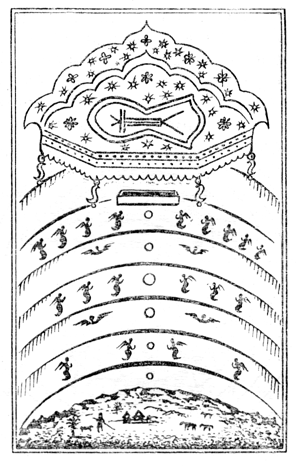
Ancient Slavs
The ideas of the Slavs about the earthly dispensation were very complex and confused. Some ancient Slavs believed that any sky can be reached by climbing the World Tree, which connects the Lower World, the Earth and all nine heavens. The World Tree looks like a huge sprawling oak tree. However, the seeds of all trees and grasses ripen on this oak. This tree was a very important element of ancient Slavic mythology - it connected all three levels of the world, stretched its branches to the four cardinal points and with its "state" symbolized the mood of people and Gods in various rites: a green tree meant prosperity and a good share, and a dried one symbolized despondency and used in ceremonies where evil gods participated. And where the top of the World Tree rises above the seventh heaven, there is an island. This island was called "iry" or "viry". Some scholars believe that the present word "paradise", so firmly connected in our life with Christianity, comes from him.
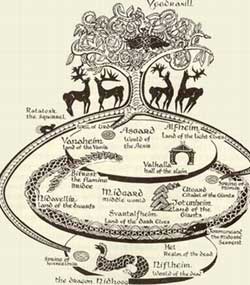
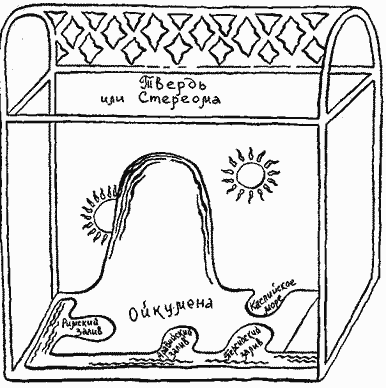
Old Testament land in the form of a tabernacle.
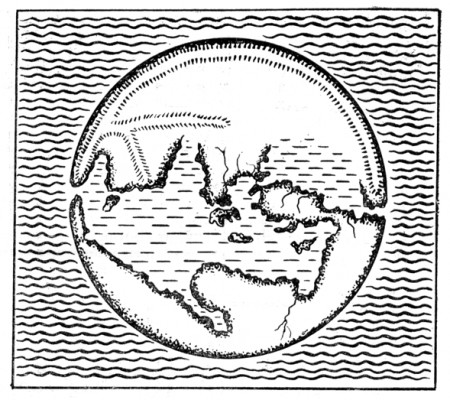
View of the Earth according to the ideas of Homer and Hesiod.
The geographers of the ancient world tried to map the spaces known to them - the Oikumene and even the Earth as a whole. These maps were imperfect and far from the truth. More reliable maps appeared only in the last two centuries BC. e.
When people began to make long journeys, evidence gradually began to accumulate that the Earth was not flat, but convex. So, moving south, travelers noticed that in the southern side of the sky the stars rise above the horizon in proportion to the distance traveled and new stars appear above the Earth that were not visible before. And in the northern side of the sky, on the contrary, the stars go down to the horizon and then completely disappear behind it. The bulge of the Earth was also confirmed by observations of receding ships. The ship disappears over the horizon gradually. The hull of the ship has already disappeared and only the masts are visible above the surface of the sea. Then they disappear too. On this basis, people began to assume that the Earth is spherical. There is an opinion that before completion, whose ships sailed in one direction and unexpectedly sailed from the opposite side there, that is, until September 6, 1522, no one suspected the sphericity of the Earth.
